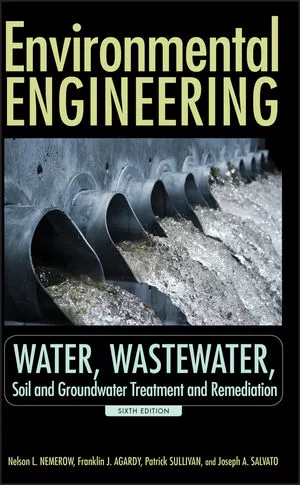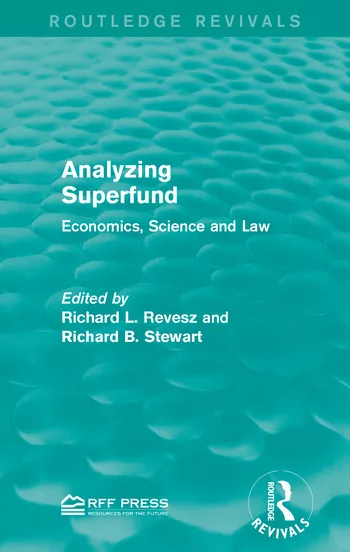Canada proposes per- and polyfluoroalkyl substance drinking water standards
The draft standards from the Government of Canada rely on EPA testing methods 533 or 537.1, but still apply to 'any' per- and polyfluoroalkyl substance.

Canada is now proposing a limit of 30 ppt for any detectable per- and polyfluoroalkyl substance, or PFAS, in drinking water sources. The draft standards from the Government of Canada rely on EPA testing methods 533 or 537.1, which according to National Law Review, only tests for 29 PFAS types. Still, the language is otherwise more expansive than EPA's own proposed limits on a limited subset of the over 12,000 PFAS compounds.
Comments to the Canadian draft document are being accepted through April 12, 2023. Below, the Government of Canada shares background and rationale on the decision.
Background
In 2018 and 2019, Health Canada established drinking water guidelines for perfluorooctane sulfonate (PFOS) and perfluorooctanoic acid (PFOA), and screening values for 9 other PFAS including:
- perfluorobutanoate (PFBA)
- perfluoropentanoate (PFPeA)
- perfluorohexanoate (PFHxA)
- perfluoroheptanoate (PFHpA)
- perfluorononanoate (PFNA)
- perfluorobutane sulfonate (PFBS)
- perfluorohexanesulfonate (PFHxS)
- 6:2 fluorotelomer sulfonate (6:2 FTS)
- 8:2 fluorotelomer sulfonate (8:2 FTS)
These values applied to water intended for human consumption. Note that full names for any other PFAS mentioned in this document are in Appendix A or B.
On April 24, 2021, the Government of Canada notified people living in Canada of its intent to move forward with activities that address PFAS as a class. In accordance with this strategy and considering new scientific evidence in the field of hazard and exposure assessment as well as in treatment and analytical technologies, a review of the current PFAS drinking water guidelines and screening values is under way.
To reduce potential exposure to PFAS through drinking water while the reassessment of the guidelines and screening values is being completed, an objective based on the sum of specific detected PFAS is proposed for Canadian drinking water. This objective, when finalized, will replace the 2 previous drinking water guidelines and 9 screening values derived for individual PFAS. This technical document was prepared in collaboration with the Federal-Provincial-Territorial Committee on Drinking Water (CDW).
Rationale
Given the potential for exposure to multiple PFAS at the same time, the potential for negative health impacts, the uncertainty and the limited data on many PFAS, a precautionary group-based approach to PFAS is warranted. The lower the levels of PFAS, the lower the risk to public health.
As such, the proposed objective for PFAS in drinking water is based on the total PFAS detected in drinking water. Total PFAS should be calculated using the full list of substances in EPA Method 533 or EPA Method 537.1 (or both) (see Appendix A) or using a method validated by another jurisdiction that measures a minimum of 18 PFAS, such that the sum of their concentrations does not exceed 30 ng/L. For the purposes of this proposed objective, a result of non-detect is considered to have a value of zero.
For the reasons noted above, it is also recommended that treatment plants strive to maintain PFAS concentrations in drinking water as low as reasonably achievable (or ALARA).
The proposed objective value of 30 ng/L was determined by considering:
- published treatment data with a focus on the median removal efficacy of the reported PFAS for a variety of water qualities at both pilot- and full-scale treatment operations (Sanexen, 2022)
- the concentration of PFAS consistently achieved at pilot- and full-scale for each of GAC, AIX and RO treatment technologies with influent concentrations similar to those found in Canadian waters
- reporting levels for PFAS for which a validated and recognized analytical method is available (U.S. EPA, 2019, 2020)
- Canadian monitoring data (MELCC, 2022; Kleywegt et al., 2020; Lalonde and Garron, 2022; Kaboré et al., 2018; Saskatchewan Water Security Agency, 2022)
- the lowest concentrations that are technically achievable for a larger number of quantifiable PFAS to reduce potential exposure to PFAS in drinking water
The proposed objective offers the Canadian drinking water sector an efficient approach for risk management by providing only 1 target value for the total concentration of this group of chemicals, thereby reducing exposure to PFAS potential health risk.
Other jurisdictions, such as the European Commission, Sweden, Denmark and some US states, have established a similar single guideline value addressing a combination of PFAS in drinking water. For example, the council of the European Union has adopted a directive that includes limits of 100 ng/L for the sum of 20 PFAS and 500 ng/L for the sum of all PFAS in drinking water (EU, 2020). In its draft background document for PFOA and PFOS in drinking water, the World Health Organization has proposed individual provisional guideline values of 100 ng/L for each of PFOA and PFOS and a combined provisional guideline value of 500 ng/L for total PFAS (WHO, 2022).
A traditional health-based approach was not adopted to derive the proposed objective in part due to the rapidly evolving science. Further, the science is complex, there is currently no consensus regarding the most sensitive health effects, and approaches to hazard and risk assessment are varied. Consequently, health-based values derived by various jurisdictions differ from each other, and many are more stringent than the previous Canadian guidelines and screening values for PFAS in drinking water.
As more toxicity data are published, an increasing number of health effects are being associated with exposure to PFAS and toxicological references values (TRVs) for these substances are being set at lower levels. Furthermore, Canadians are exposed to multiple PFAS simultaneously and the potential hazard associated with exposure to these mixtures is unknown. Consequently, a substance-by-substance assessment of the TRVs available for each PFAS is not a sustainable approach for managing PFAS in drinking water. Despite the approach not being health-based, the toxicity data are generally supportive of the proposed objective. A review of some of the current data for the most data-rich PFAS indicates that when these TRVs are combined with standard reference values (such as for body weight and drinking water intake), the resulting health-based values for individual PFAS in drinking water are often in the low ng/L range.
Many of the PFAS addressed under the proposed objective include the most studied PFAS (that is, perfluorocarboxylic and sulfonic acids) and PFAS that are currently considered to be among the most toxicologically potent (for example, PFOA, PFNA, PFDA, PFHxS and PFOS) (Bil et al., 2021; Sanexen, 2021). This group also includes the most commonly detected PFAS in drinking water (for example, PFHxA, PFOA and PFOS). While there are limited monitoring data for PFAS in Canadian drinking water (Kleywegt et al., 2020; Kaboré et al., 2018; MELCC, 2022; NSECC, 2022; Saskatchewan Water Security Agency, 2022), data from other jurisdictions show that many of these substances are found in water and other environmental media and indicate the potential for transfer or leaching into drinking water (Reade and Pelch, 2020).
The proposed objective includes the PFAS targeted by the available validated analytical methods, or a method validated by a jurisdiction, to ensure a reduction of exposure to PFAS that can be quantified, while still allowing some flexibility in which method to use. However, the presence of any individual PFAS in a given drinking water sample can be highly variable. Such variability indicates that relying on a small group of selected PFAS for the proposed objective may not reduce exposure to the same extent as establishing a total for the sum of a broader group of PFAS that can reliably be analyzed in drinking water. Where possible, utilities should strive to analyze as many PFAS as possible using validated methods to better understand the PFAS in the drinking water and better inform treatment selection.
In adopting a group-based objective, several principal considerations were taken into account. The PFAS studied to date have been shown to be extremely persistent, mobile and difficult, if not impossible, to remove from the environment once released. These properties make exposure to PFAS inevitable and potentially continuous. The adverse effects associated with every individual PFAS are currently unknown. However, for well-studied PFAS (such as PFOA and PFOS), more adverse effects are coming to light identified at ever lower levels. For less well-studied PFAS, as more research is conducted, additional adverse effects are identified. Therefore, based on what is known about well-studied PFAS and the potential for other PFAS to behave similarly, there are potential human health concerns for the group of PFAS. Consequently, a precautionary group-based approach is warranted.
Acknowledging all the above considerations, this proposed objective is deemed the most appropriate approach to reduce Canadians' potential exposure to multiple PFAS through drinking water while the formal guidelines are being revised. The full revision of the guidelines for PFAS in drinking water will include a comprehensive review of new toxicological evidence (for example, TRVs) and risk assessments such as the U.S. EPA's 2022 health advisories for 4 PFAS (U.S. EPA, 2022d, e, f, g). The revision will also include a comprehensive review of new information on analytical and treatment methods for PFAS as well as new findings for the management of treatment residuals.





